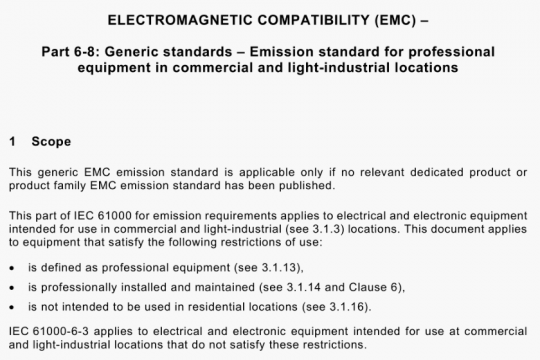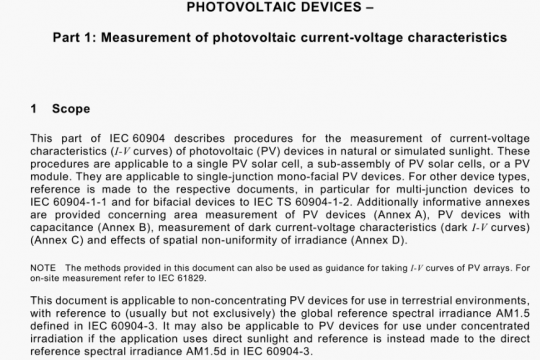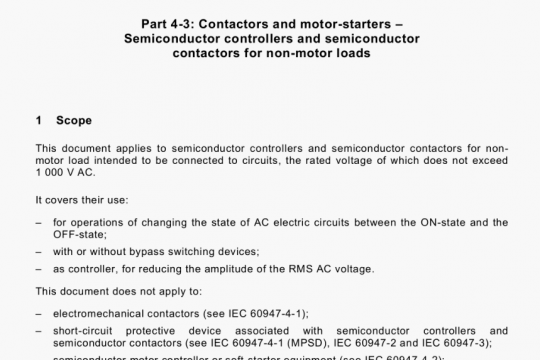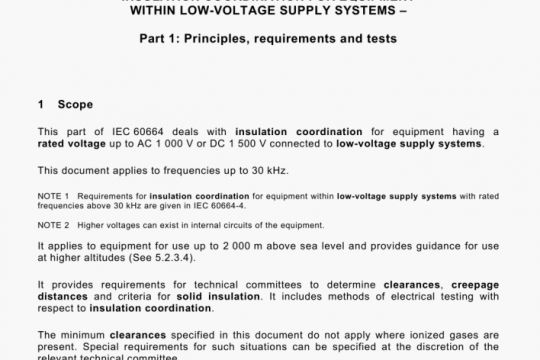IEC 62504-2018 pdf download
IEC 62504-2018 pdf download.General lighting – Light emitting diode (LED) products and related equipment – Terms and definitions.
IEC 62504 IEG 62504 is of assistance in the common understanding of terms and definitions, relevant for general lighting with LED technology. The terms included are those already available in IEC LED standards or used in manufacturers’ literature.
This standard provides descriptive terms (like “LED light sources”) and measurable terms when modified from IEC 60050-845 (like “colour rendering index”).
NOTE Annex A gives overviews of LED package design and systems composed of LED light sources and controlgear.
2 Normative references
The following documents, in whole or in part, are normatively referenced in this document and are indispensable for its application. For dated references, only the edition cited applies. For undated references, the latest edition of the referenced document (including any amendments) applies.
lEG 60050 (all parts), International Electrotechnical Vocabulary (available at <http://www.electropedia.org>).
CIE Technical Report 127:2007, Measurement of LEDs
3 Terms and definitions
For the purposes of this document, the terms and definitions given in IEC 60050-845, with the exception of those modified below, and the following apply.
3.1 ageing preconditioning period of the LED light source before initial values are taken
3.2 angular subtense angle subtended by an apparent source as viewed from a point in space
Note 1 to entry: Angular subtense is expressed in radians (rad).
Note 2 to entry: The angle extension Is determined by the observation distance, but at no distance smaller than the minimum distance of accommodation of the eye.
Note 3 to entry: The location and angular subtense of the apparent source depends on the viewing position in the beam.
Note 4 to entry: The angular subtense of an apparent source is only applicable in the wavelength range from 380 nm tol 400 nm.
Note 5 to entry: lEG TR 62778 gives additional information with regards to beam divergence.
[SOURCE: IEC 60825-1, 3.7, modified — Notes 1, 2 and 5 to entry are added and in the note 4 to entry the value of the wavelength range has been changed from ‘400 nm to 1 400 nm’ to ‘380 nm to 1 400 nm’; IEC 62471, 3.2, modified.]
3.3 apparent source
for a given evaluation location of the retinal hazard, the real or virtual object that forms the smallest possible retinal image (considering the accommodation range of the human eye)
Note 1 to entry: The accommodation range of the eye is assumed to be variable from 100 mm to infinity. The location of the apparent source for a given viewing position in the beam is that location to which the eye accommodates to produce the most hazardous retinal irradiance condition.
Note 2 to entry: This definition is used to determine, for a given evaluation position, the location of the apparent origin of laser radiation in the wavelength range of 380 nm to 1 400 nm. In the limit of vanishing divergence, i.e. in the case of a well collimated beam, the location of the apparent source goes to infinity.
[SOURCE; IEC 60825-1, 3.10, modified — In the note 2 to entry the value of the wavelength range is changed from ‘400 nm to 1 400 nm’ to ‘380 nm to 1 400 nm’.]
3.4 beam angle
angle between two imaginary lines in a plane through the optical beam axis, such that these lines pass through the centre of the front face of the lamp and through points at which the luminous intensity is 50 % of the centre beam intensity
Note 1 to entry: Beam angle is expressed in degrees.
Note 2 to entry: This angle is a full angle measure, not a half angle measure.
[SOURCE: IEC TR 61341, 2.4, modified, — The notes to entry are added.]IEC 62504 pdf download.




